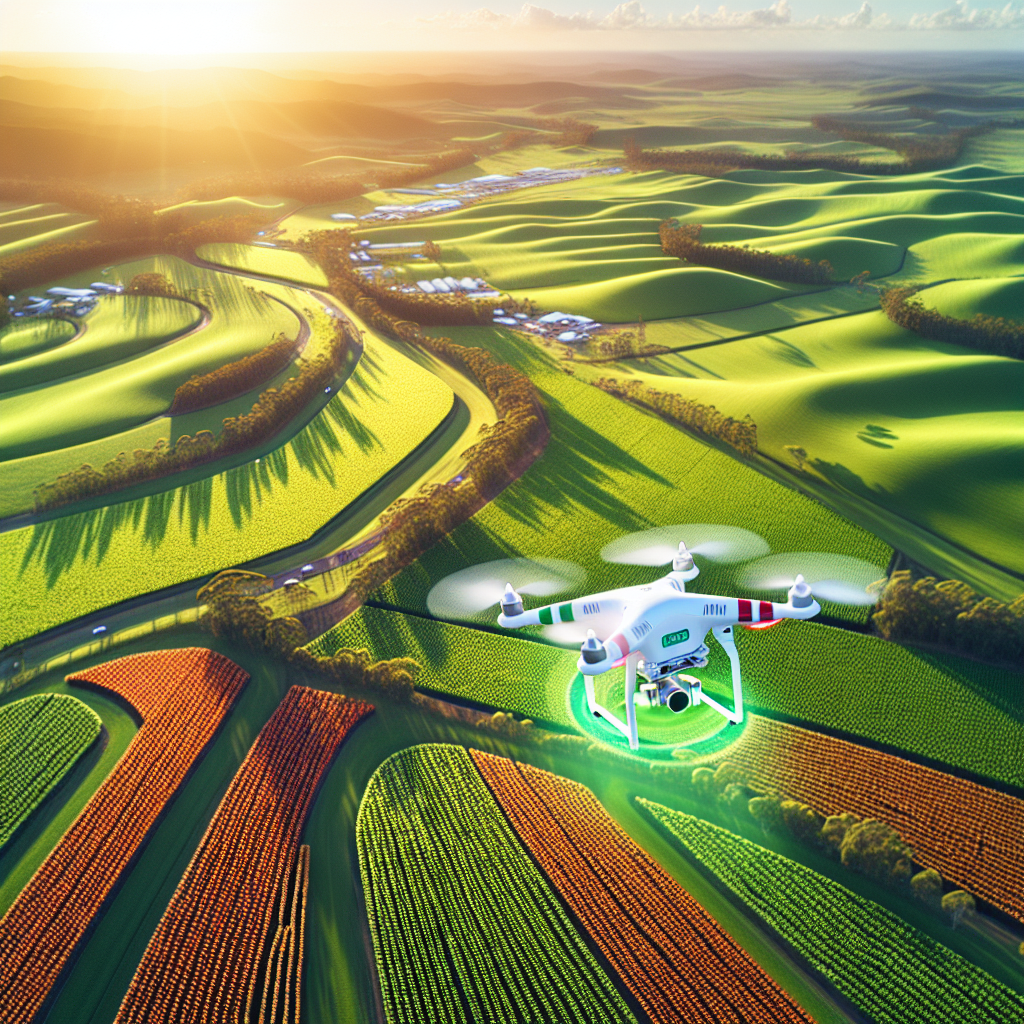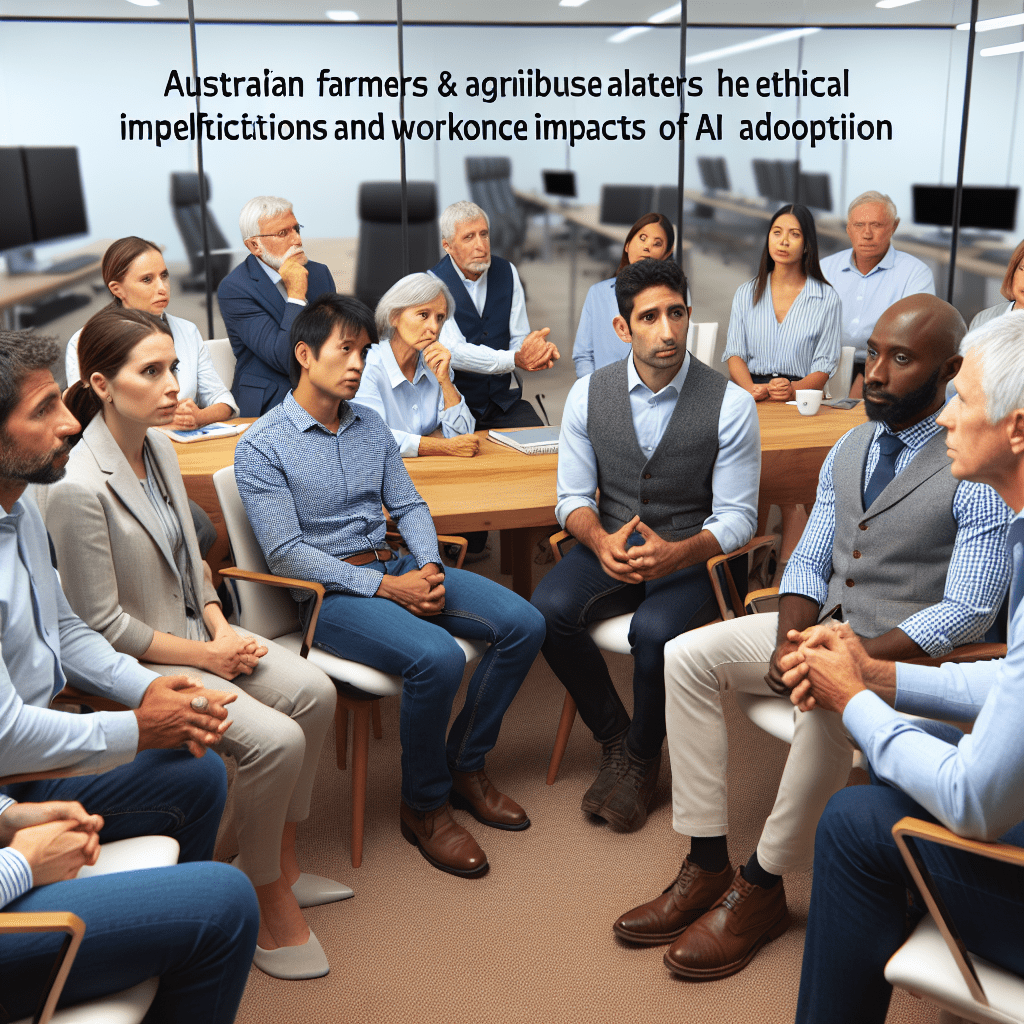Table of Contents
In recent years, the Australian agribusiness sector has been undergoing a quiet revolution, driven by the rapid adoption of artificial intelligence (AI) technologies. From precision farming to supply chain optimization, AI is transforming how the country’s farmers and agribusinesses operate, promising to boost productivity, efficiency, and sustainability. As we look ahead to 2024, several key trends and forecasts are emerging that will shape the future of AI in Australian agriculture.
The Rise of Precision Agriculture
One of the most significant trends in Australian agribusiness is the growing use of precision agriculture techniques, powered by AI and machine learning. Precision agriculture involves using data-driven insights to optimize crop yields, reduce waste, and minimize environmental impact. By leveraging sensors, drones, and satellite imagery, farmers can gather real-time data on soil health, crop growth, and weather patterns, enabling them to make more informed decisions about planting, fertilizing, and harvesting.
According to a recent report by the Australian Farm Institute, the adoption of precision agriculture technologies in Australia is expected to increase by 30% by 2024. This growth will be driven by the falling costs of sensors and drones, as well as the increasing availability of high-speed internet in rural areas. As more farmers embrace precision agriculture, we can expect to see significant improvements in crop yields and resource efficiency across the country.

Automated Livestock Management
In addition to crops, AI is also transforming the way Australian farmers manage their livestock. Automated livestock management systems, powered by computer vision and machine learning algorithms, are enabling farmers to monitor the health and wellbeing of their animals in real-time. These systems can detect early signs of disease, track feeding and growth patterns, and even identify individual animals for targeted treatment.
One notable example is the “Smart Shepherd” system developed by the University of New England in partnership with Meat & Livestock Australia. The system uses collar-mounted sensors and AI algorithms to track the movement and behavior of sheep, alerting farmers to potential health issues or predator attacks. By 2024, it’s estimated that over 50% of Australian sheep farmers will be using some form of automated livestock management system, leading to improved animal welfare and productivity.
Supply Chain Optimization
Beyond the farm gate, AI is also revolutionizing the way Australian agribusinesses manage their supply chains. With the help of machine learning algorithms and predictive analytics, companies can optimize their inventory levels, reduce waste, and improve delivery times. AI-powered demand forecasting, for example, can help agribusinesses anticipate shifts in consumer preferences and adjust their production accordingly.
A recent case study by KPMG highlighted the success of Costa Group, one of Australia’s largest fresh produce suppliers, in using AI to optimize its supply chain. By leveraging machine learning algorithms to predict demand and optimize inventory levels, Costa was able to reduce waste by 20% and improve its delivery accuracy by 15%. As more Australian agribusinesses adopt AI-powered supply chain solutions, we can expect to see significant improvements in efficiency and sustainability across the sector.

Climate Resilience and Sustainability
As climate change continues to pose challenges for Australian agriculture, AI is emerging as a key tool for building resilience and sustainability. By leveraging AI-powered climate modeling and predictive analytics, farmers can better anticipate and adapt to changing weather patterns, reducing the impact of droughts, floods, and other extreme events.
In 2023, the Australian government launched the “Climate-Smart Farms” initiative, providing $500 million in funding for farmers to adopt AI and other technologies to improve their climate resilience. The initiative includes support for precision irrigation systems, which use AI to optimize water use based on real-time weather and soil data, as well as carbon farming projects that leverage AI to measure and verify carbon sequestration.
By 2024, it’s estimated that over 30% of Australian farms will be using some form of AI-powered climate resilience technology, helping to safeguard the country’s agricultural sector against the impacts of climate change.
Ethical Considerations and Workforce Impacts
While the adoption of AI in Australian agribusiness holds immense promise, it also raises important ethical considerations and questions about the future of work in the sector. As automation and AI become more prevalent, there are concerns about job losses and the need to retrain and upskill workers to adapt to new roles.
According to a 2023 report by the Australian Council of Trade Unions, up to 20% of jobs in the agricultural sector could be automated by 2030, highlighting the need for proactive planning and investment in worker transition programs. At the same time, there are concerns about the ethical implications of AI-powered decision-making in agriculture, particularly around issues of data privacy, transparency, and bias.
As Leanne Wiseman, Professor of Law and Director of the Australian Centre for Intellectual Property in Agriculture, notes: “As AI becomes more embedded in Australian agriculture, it’s crucial that we have robust ethical frameworks and governance structures in place to ensure that these technologies are developed and deployed in a responsible and equitable manner.”

Looking Ahead: Predictions for 2024 and Beyond
As we look ahead to 2024 and beyond, it’s clear that AI will continue to play an increasingly central role in Australian agribusiness. From precision agriculture and automated livestock management to supply chain optimization and climate resilience, AI is transforming every aspect of the sector, driving productivity, efficiency, and sustainability.
While there are certainly challenges and ethical considerations to navigate, the overall outlook for AI adoption in Australian agriculture is positive. With continued investment in research and development, workforce training, and ethical governance frameworks, Australia is well-positioned to harness the power of AI to build a more resilient, sustainable, and prosperous agricultural sector for generations to come.
As Rob McFarland, Head of Agribusiness at National Australia Bank, predicts: “By 2024, we expect to see AI firmly embedded in the DNA of Australian agribusiness. From the paddock to the plate, AI will be driving innovation, efficiency, and competitiveness across the sector, cementing Australia’s position as a global leader in agricultural technology and sustainability.”